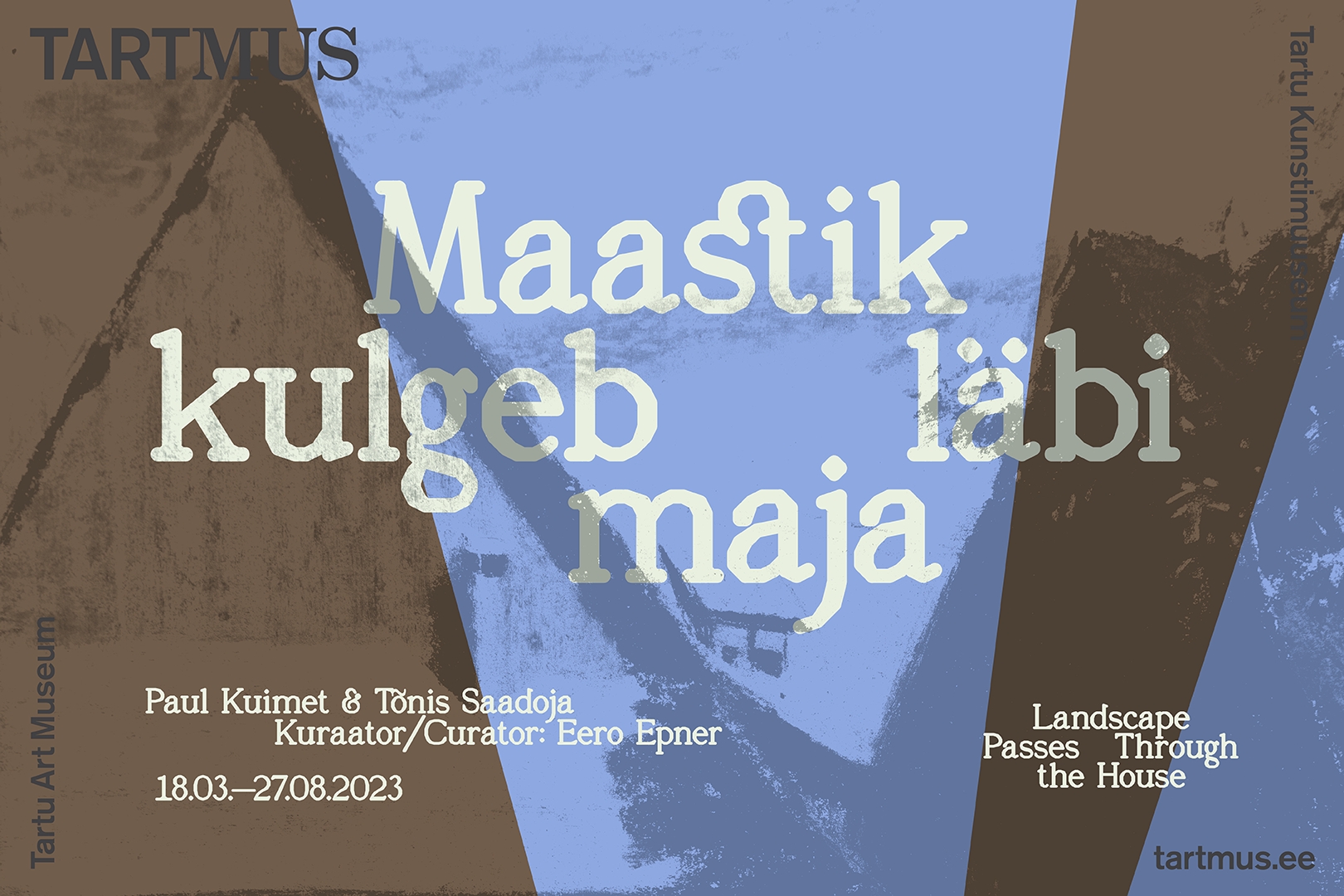Paul Kuimet and Tõnis Saadoja have worked for years with similar ideas and in similar manners but the present exhibition is their first collaboration. During the preparatory dialogue, questions were asked about the possibility of depicting the landscape in the contemporary world, about the shift in the meanings of images which took place a long time ago and whose aftershocks are only now being felt, and, of course, the obvious question “why?”. The two authors, with their refined styles, worked with landscapes themselves and with the traditions of depicting landscapes: the dynamics of landscapes that do not rely on people, as well as attempts to use art to impose clearly defined regimes of viewing and perceiving landscapes which have existed for centuries. They worked with cameras and paintbrushes, in analogue photographic laboratories and in studios, on a balcony at home and in unknown places in Pärnu County.
Besides new photos, paintings and films made specially for the exhibition, the creators turned to the collections of art museums in search of rhyming emotions and viewpoints among works of art which usually have not been put on display at exhibitions. Thus far, these works have been deemed too insignificant and bland, but the present context highlights their humility towards the motif, and their unwillingness to conquer the landscape.
According to Tõnis Saadoja, compiling the exhibition has been quite a sentimental journey. “Old discoveries in the archives are all very poetic and in many cases because of their unfinished nature also very fragile,” he says. “In order to discover a relationship with the materials, I have tried to find an overlap with old painterly techniques, to experience the old sentiment as authentically as possible. I have spent so much time on it that at times it does not feel like work but like a personal exercise in which the visible part is quite minuscule.”
Besides a certain sadness and melancholy, Paul Kuimet emphasises the field of meaning that accompanies the execution of the works. “For me, the aspects of the darkroom and analogue enlargement are important,” he states. “These works rely on light and colour and the opportunities and limitations which accompany analogue technologies. In the end, everything comes down to the elements which the beholder experiences in front of the work.” According to Tõnis Saadoja, there is a similarity between painting and working with photos in an analogue laboratory because manipulating images with coloured filters in a lab is reminiscent of painting, and painting, in turn, is often based on photographic images.
Paul Kuimet (b 1984) is an artist whose films and photos use reassuring melancholy situations, times and spaces. His focus has been on modernist architecture and how we perceive such ordered space. Tõnis Saadoja (b 1980) is a painter whose latest series have approached the relationship between people and spaces while asking questions about the places and possibilities of painting after the latest visual turn, when the world is first and foremost perceived through images. The exhibition also includes works from the collections of the Art Museum of Estonia and the Tartu Art Museum.
Curator: Eero Epner
Graphic design: Kersti Heile
Coordinator: Kristlyn Liier
Exhibition team: Indrek Aavik, Richard Adang, Nele Ambos, Siim Asmer, Tanel Asmer, Dirk DeJonghe, Indrek Grigor, Mari Hiiemäe, Joanna Hoffmann, Kristjan Isand, Mare Joonsalu, Margus Joonsalu, Viktor Kiss, Jaanika Kuznetsova, Katrin Lõoke, Liivo Lõoke, Paavo Mardi, Tõru-Tõnn Parts, Fidelia Regina Randmäe , Anti Saar, Jaak Saard, Kristel Sibul, Vidrik Sommer, Villem Säre, Peeter Talvistu, Kristo Tamm, Ago Teedema
Special thanks: Darja Jefimova
Thanks: Eesti Kunstimuuseum / Art Museum of Estonia
Supporter: Eesti Kultuurkapital / Cultural Endowment of Estonia




